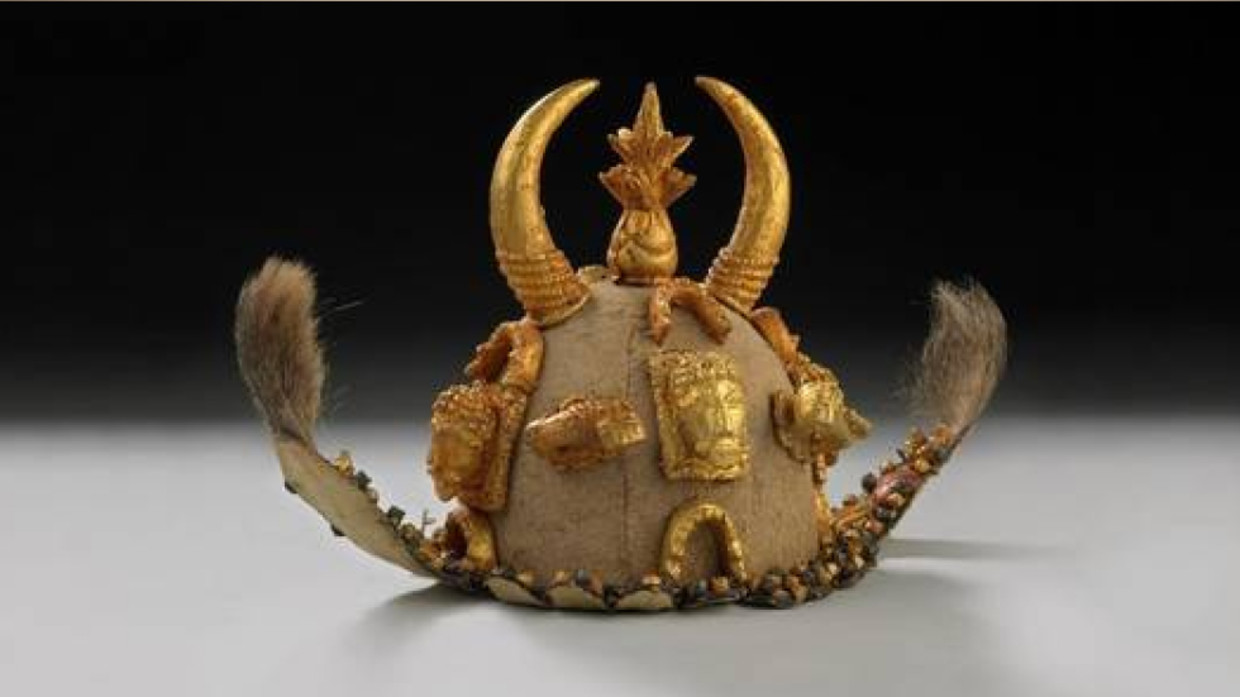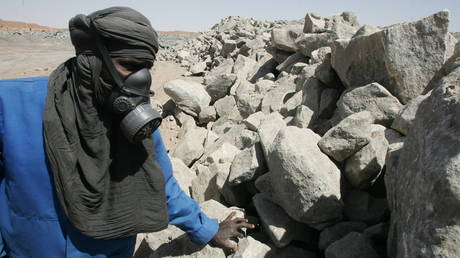At the end of January, the British Museum and Victoria & Albert (V&A) Museum announced that more than 30 Asante ‘crown jewels’, gold artifacts that once belonged to the royals of Asante (or Ashanti) in modern-day Ghana, would be brought to the Ghanaian city of Kumasi in April.
This, however, is only a loan deal between the UK museums and the Ghanaian Manhyia Palace Museum. British laws ban museums from permanently returning contested artifacts to their original owners, which means that despite the announced ‘repatriation’, the golden items, illegally extracted some 150 years ago, will only be temporarily placed in Ghana. Will they ever be returned for good?
Historical artifacts aptly depict the culture of a people. Given the waning influence of African traditional institutions, largely eroded by Westernization and cultural importation, societal narratives find resonance when historical events and souvenirs are relied upon. When discussing the legacy of culture, tracing back to a time of overpowering community influence on legal, religious, and nuptial relationships, these artifacts lend credence to the veracity of handed-down stories.
Despite fluctuations in the gold trade over the years, Africa’s role as a significant player in the gold market is firmly established. In 2022, a cohort consisting of Switzerland, the UK, US, Hong Kong, and the United Arab Emirates accounted for about 60.6% of global gold sales. However, Africa still holds over 40% of the world’s gold reserves. This reality underscores the enduring importance of the continent in the gold industry.
Central to this narrative is the story of the Ashanti Gold. The Ashanti region, formerly known as Asante, holds historical significance for its involvement in the trans-Atlantic slave trade during the 19th century. Despite this dark past, it was also renowned for its exquisite gold and brass craftsmanship, as well as its production of Kente, a brightly colored woven cloth. These contributions to the global trade market earned the region, which later became part of Ghana, the moniker ‘Gold Coast’.
It was an easily targeted spot for slave traders and gold grabbers who covertly masqueraded as traders. Therefore, it features prominently in the African historical narrative of capital and human exploitation by Europeans. Dr. Judith Spicksley, a historian at the Wilberforce Institute for the Study of Slavery and Emancipation (WISE) at the University of Hull, in her seminal article ‘Pawns on the Gold Coast’, describes how early in the trade relationship, Europeans took gold pawns as security for debt. However, as unorthodox rules for slave operations weakened and the lust for more gold overshadowed the emergent supply, Europeans turned increasingly toward the use of human pawns. This is no different from other exploitative processes that led to the loss of precious resources on the continent.
Official evidence of the looting of Ashanti Gold began during the Anglo-Asante War of 1874, when Britain’s military invasion of the Kumasi empire, sitting on the largest gold reserves in the region, inflicted much damage. Armed with explosives and superior firearms, the British military went on a sordid quest for Ashanti’s Gold Royal regalia – like the Mponponsuo sword created 300 years ago by the Kingdom’s Okomfo (spiritual leader) Anokye, which led the list of looted items in 1874. Under the pretext of ending slavery, British military incursions and lopsided trade treaties enforced with superior military might on African leaders occurred. Leaders who resisted were exiled, like the Asantehene Agyeman Prempeh, who was exiled to Seychelles in 1874.
The British established trading ports, ensuring Britain declared itself a legitimate ruler on foreign soil. The rulers of several African kingdoms acted as middlemen in these trades, often against their will, but had to consent for self-preservation. The spoils from these conquered kingdoms paid for these wars. In Asante, the Asantahene, ruler of the Ashanti people, signed the harsh Treaty of Fomena in July 1874 to end the war. A standout clause in the treaty between Queen Victoria and Kofi Karikari, King of Ashanti, was the payment of 50,000 ounces (over 1,400kg) of approved gold as indemnity for the expenses caused to the Queen of England by the war. Britain incurred costs from these wars at the expense of its opponents, destroying Africa’s biggest empires.
1874 wasn’t the only instance of looting. In 1896, ceremonial swords, cups, and other vital items measuring a palace’s royalty were stolen. In his 2020 book ‘The Brutish Museums: The Benin Bronzes, Colonial Violence and Cultural Restitution’, Dan Hicks, a British archaeologist, anthropologist, and professor at the University of Oxford, repudiates the presence of these artifacts in Western museums, which perpetuates a narrative of colonial superiority and cultural dominance while erasing the histories and voices of the communities from which they were stolen.
Although discussions about the restitution of African artifacts predate independence in most African countries, they intensified in the latter half of the 20th century. Archaeologist and Nigeria’s head of the Federal Department of Antiquities, Ekpo Eyo, sent circulars to several European embassies in 1972 about the repatriation of the Benin Bronzes (thousands of 14th- to 16th-century plaques and sculptures taken by the British from the African Kingdom of Benin in the late 19th century) and spurred official pronouncements like the 1970 UNESCO Convention on the Means of Prohibiting and Preventing the Illicit Import, Export, and Transfer of Ownership of Cultural Property. This convention offers a shared framework among state parties regarding actions required to prohibit and prevent cultural property import, export, and transfer.
The convention emphasizes that the return and restitution of these cultural properties are the linchpin of the convention, which mandates safeguarding the identity of peoples and promoting peaceful societies to strengthen the spirit of solidarity and stifle the expansionary rise of black-market trades across the continent.
After 150 years, the Ashanti Gold artifacts are held in various museums around the world, including major museums in Europe and North America. The British Museum in London holds 32 of the 39 historical artifacts, while seven treasures are at the Fowler Museum of the University of California in Los Angeles. Other minor artifacts, which receive little attention, are held in museums such as the Metropolitan Museum of Art in New York City, the Musee du quai Branly-Jacques Chirac in Paris, and other smaller regional museums or private collections.
In restitution efforts for the Ashanti Gold artifacts, complex legal and logistical hurdles are at play. Firstly, there has to be established provenance through examining documentation, archives, and historical records, owing to the difficulty arising from the long years of history and multiple transfers. Variations in international laws governing the repatriation of cultural property also add to the myriad of challenges. Transporting the artifacts from current holders to their destination and settling associated legal disputes or financial concerns provides further complication. Collaboration among international partners toward this is essential for successfully repatriating these artifacts.
In conclusion, this extensive discussion about restitution aims to deepen existing Euro-African diplomatic relationships. The emphasis on restitution primarily lies in its utility as a building block for reconciliation; it aims to rectify pre-colonial injustices, foster international dialogue, and advance the growing bilateral trade between countries on both continents. The Ghana restitution experience will provide the policy framework and lead the roundtable engagement for restitution claims from other countries in Africa. As noted earlier, this action will not only demonstrate contrition but also make the most declarative statement from the West and other collaborators regarding their penitence during this ruinous expedition in colonial Africa.
The statements, views and opinions expressed in this column are solely those of the author and do not necessarily represent those of RT.


